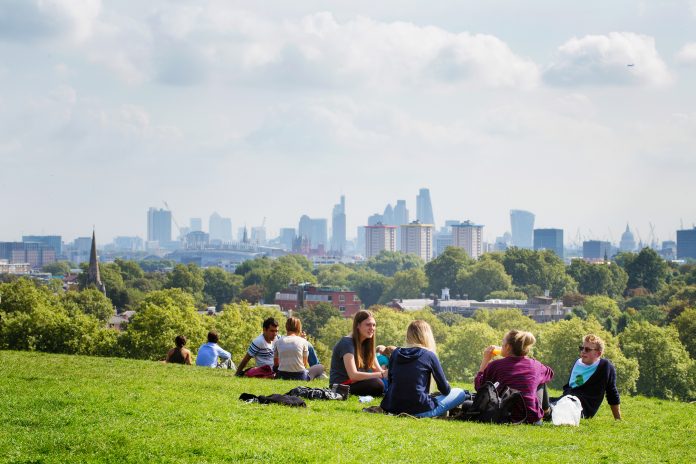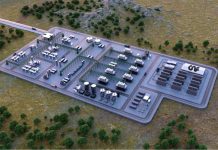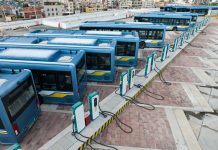Stephen O’Sullivan, Head of Enforcement Business Development and Sales at Siemens Mobility, discusses how the pandemic has affected plans for Clean Air Zones (CAZs)
At the beginning of the year, traffic levels across some of the UK’s largest cities remained at more than 80% of the levels seen before COVID-19, despite the introduction of strict lockdown measures across the country.
The data, sourced by Siemens Mobility Limited in partnership with HERE Technologies, shows that Birmingham, Bristol, Leeds, Liverpool, Manchester, Newcastle and Sheffield experienced traffic levels more than three-quarters higher during the January 2021 lockdown compared to April 2020.
With the Government publishing its roadmap out of lockdown through to June 21, the impact on air quality could be significant as restrictions continue to ease, with traffic predicted to reach levels in excess of those noted pre-pandemic.
In March last year, the UK Government’s guidance to stop all non-essential journeys led to a dramatic reduction in the number of vehicles on the road network, with air quality levels in towns and cities improving almost overnight. While clearly unwanted, the pandemic nevertheless illustrated that interventions, however undesirable, can have a rapid and significant impact on air quality levels. Perhaps the most extreme example, COVID-19 demonstrated the scale of improvement that can be achieved.
Inevitably as restrictions were relaxed, it became clear that the improvements were only temporary. Traffic levels rose again and the issues of congestion, network capacity, safety and air quality all quickly resurfaced.
Clean Air Zones (CAZs)
Despite these trends, a number of authorities have taken the decision to pause the decision-making process around the implementation of Clean Air Zones, citing the impact of the pandemic on traffic levels, and therefore improved air quality, as their reasoning. Bath, Portsmouth, Birmingham and London are the only cities to make commitments so far, leaving people in other urban areas around the country, in particular the North of England, to miss out on the quality-of-life benefits that a CAZ can bring.
Public opinion research undertaken in June 2020 by YouGov on behalf of Siemens Mobility Limited, indicated that the pandemic may result in long-term changes to transport choices with many opting to make regular journeys by car. The drive to encourage travellers to move from private car journeys to more environmentally friendly transport modes, has therefore been made that much more difficult by the pandemic, with the consequent increase in vehicular traffic having a direct and adverse effect on air quality.
However, the YouGov polling also showed the public’s continued commitment to the environment, with strong support for the introduction of local Clean Air Zones. The majority of respondents said they would support the introduction of a zone in their nearest town or city centre and two-thirds of those living in urban areas support the measures. Nearly three in 10 said a local CAZ would make them more likely to consider switching to an electric vehicle next time they changed cars.
Local authorities, therefore, do have a measure of support for the introduction of measures to improve air quality, but it remains a tough challenge as there is no ‘silver bullet’ resolution. Each authority will require a slightly different solution depending on its specific objectives and requirements.
London Ultra Low Emission Zone (ULEZ)
In London, the results following the introduction of the city’s Ultra Low Emission Zone have been extremely positive. Operating 24 hours a day, 7 days a week, ULEZ requires vehicles that do not meet strict emissions standards to pay a daily charge or incur a penalty. After ten months of operation, research from the Mayor of London’s Office showed that ULEZ had contributed to:
- A 44% reduction in roadside nitrogen dioxide in the central zone
- 44,100 fewer polluting vehicles being driven in the central zone every day
- Over 80% of vehicles in the zone meeting the ULEZ emissions standards (up from 39% in February 2017)
- ULEZ has saved around 12,300 tonnes of carbon dioxide emissions.
Clearly, enforcement measures can be effective in changing behaviour, and technology can help drive lasting behavioural change, both in the type of vehicles people choose to drive and the travel choices they make. Indeed, from October 2021, the ULEZ area will be expanded to create a single zone, 18 times larger, which will include the whole of inner London, bounded by the city’s North and South Circular roads.
Although Low Emission and Clean Air Zones are becoming increasingly prevalent, the way they are configured is specific to that area’s requirements. Many authorities already have fixed assets, with roadside cameras and other infrastructure installed, so for them the questions are, can the existing infrastructure be deployed in a slightly different way, or extended to achieve broader objectives, and can any of the data already being harvested be used more effectively?
In addition to ULEZ, Siemens Mobility is also now installing Clean Air Zone solutions in Birmingham and Portsmouth, helping reduce air pollution by encouraging vehicle owners to transition to cleaner, less-polluting vehicles. The company’s intelligent vehicle recognition and analysis software means that charging can be set to apply to a specific group or groups of vehicles, so, for example, only the worst polluting such as heavy goods vehicles, coaches, buses, and taxis would be subject to a charge. Ultimately, the owners of these vehicles are being challenged to make cleaner choices or consider alternative methods of transport.
Large scale projects like ULEZ can perhaps be seen as a panacea, but it may be possible to achieve the same desired results by introducing a series of smaller schemes, each achieving incremental benefits which combine to drive air quality improvements.
Even relatively small systems, such as those enforcing yellow box junctions, will deliver considerable secondary benefits. The primary task for these more tactical, local schemes may be to reduce congestion at a particular junction, but by doing this, they will also provide substantial benefits, improving the traffic flow in the surrounding areas and as a result, reduce congestion and improve air quality and road safety. So, by effectively addressing the primary need and taking a more holistic view of the problem, it is very likely that broader benefits will also be achieved.
In the last 12 months there has been a marked increase in the number of transport authorities seeking to realise the benefits that enforcement solutions can deliver; looking to engage with system providers at the early stages of scheme design and development to achieve their short-, medium- and long-term goals – ultimately to improve the quality of air and overall health and wellbeing of those who live, work and travel in their local authorities.
Please note: This is a commercial profile











